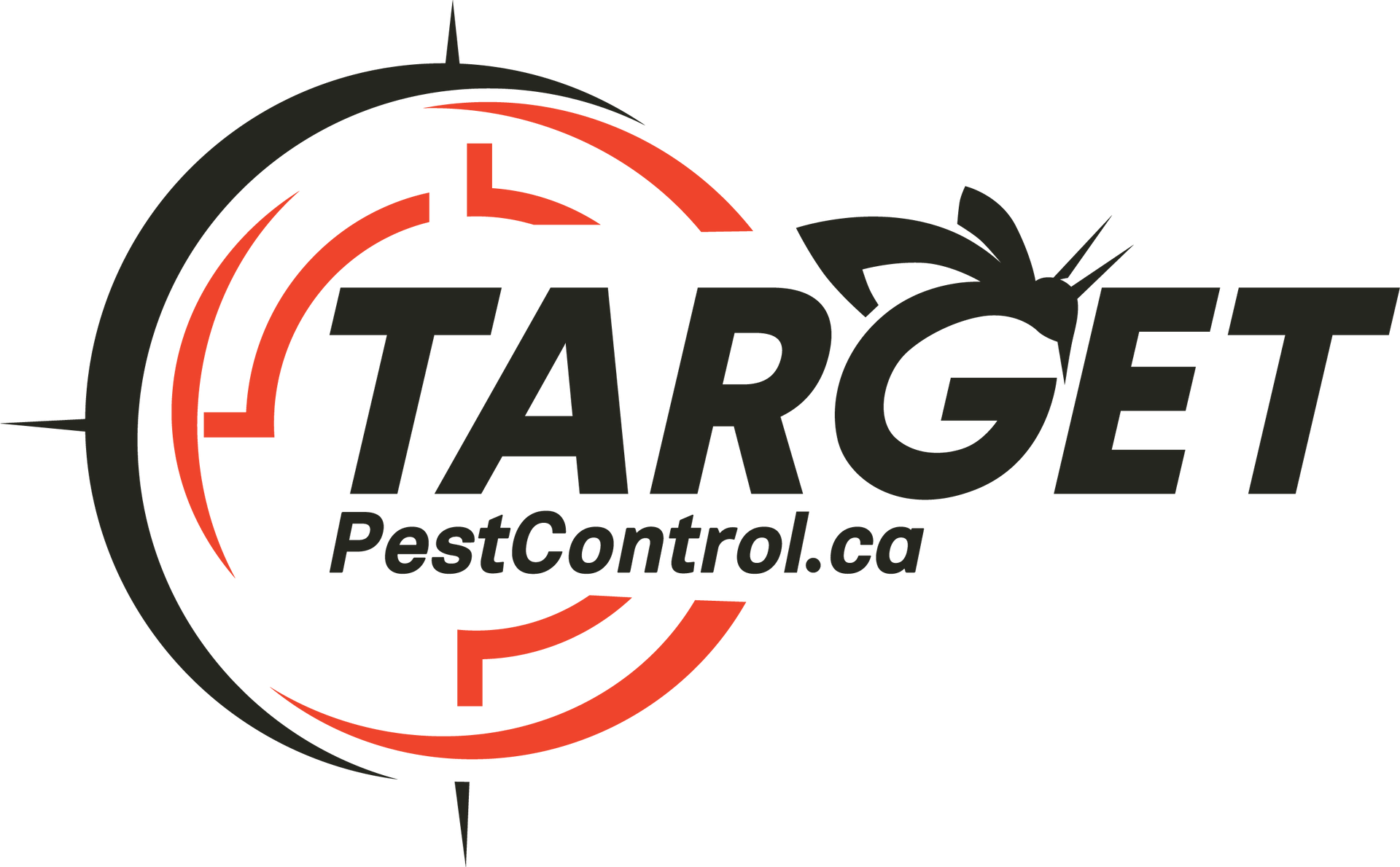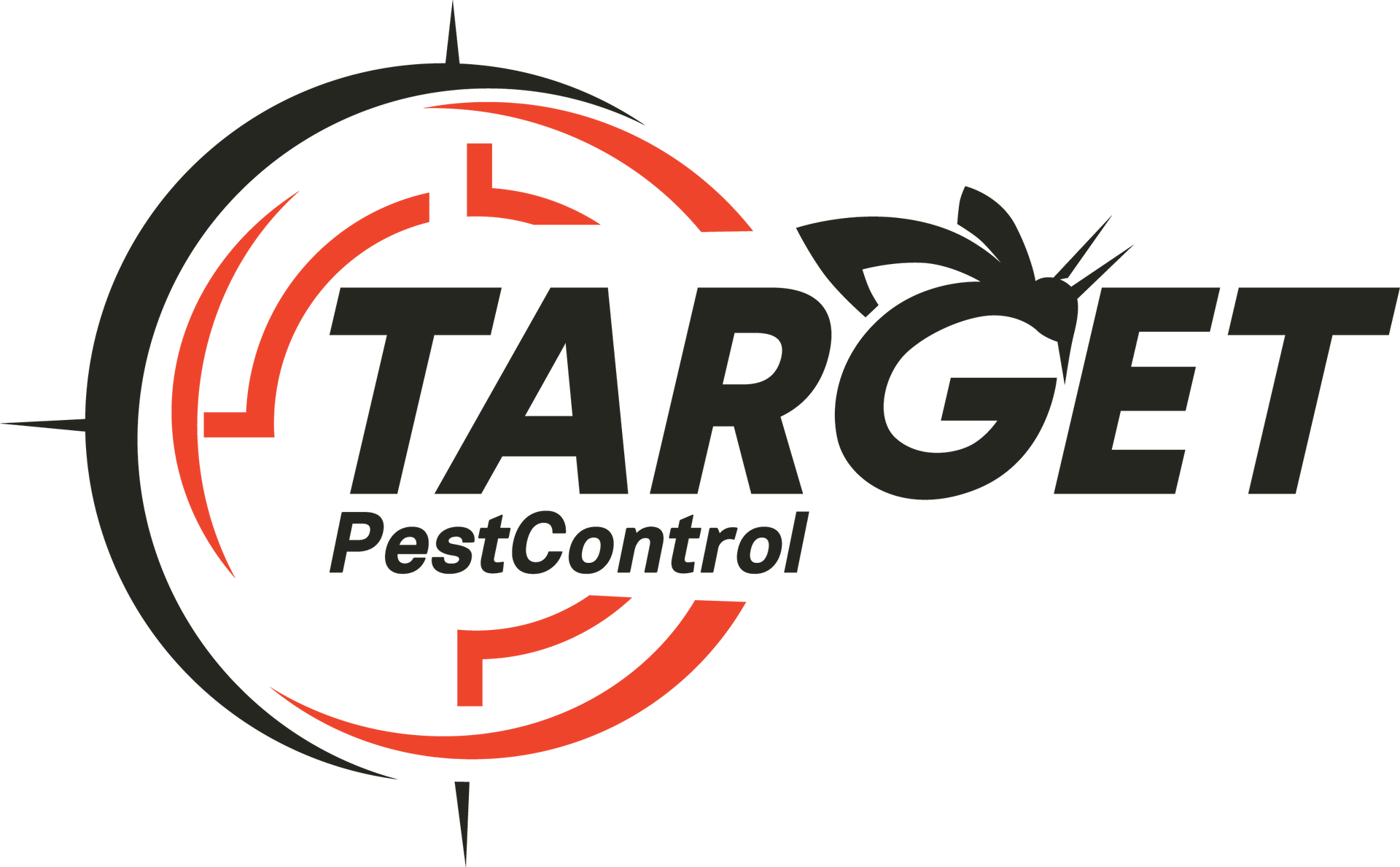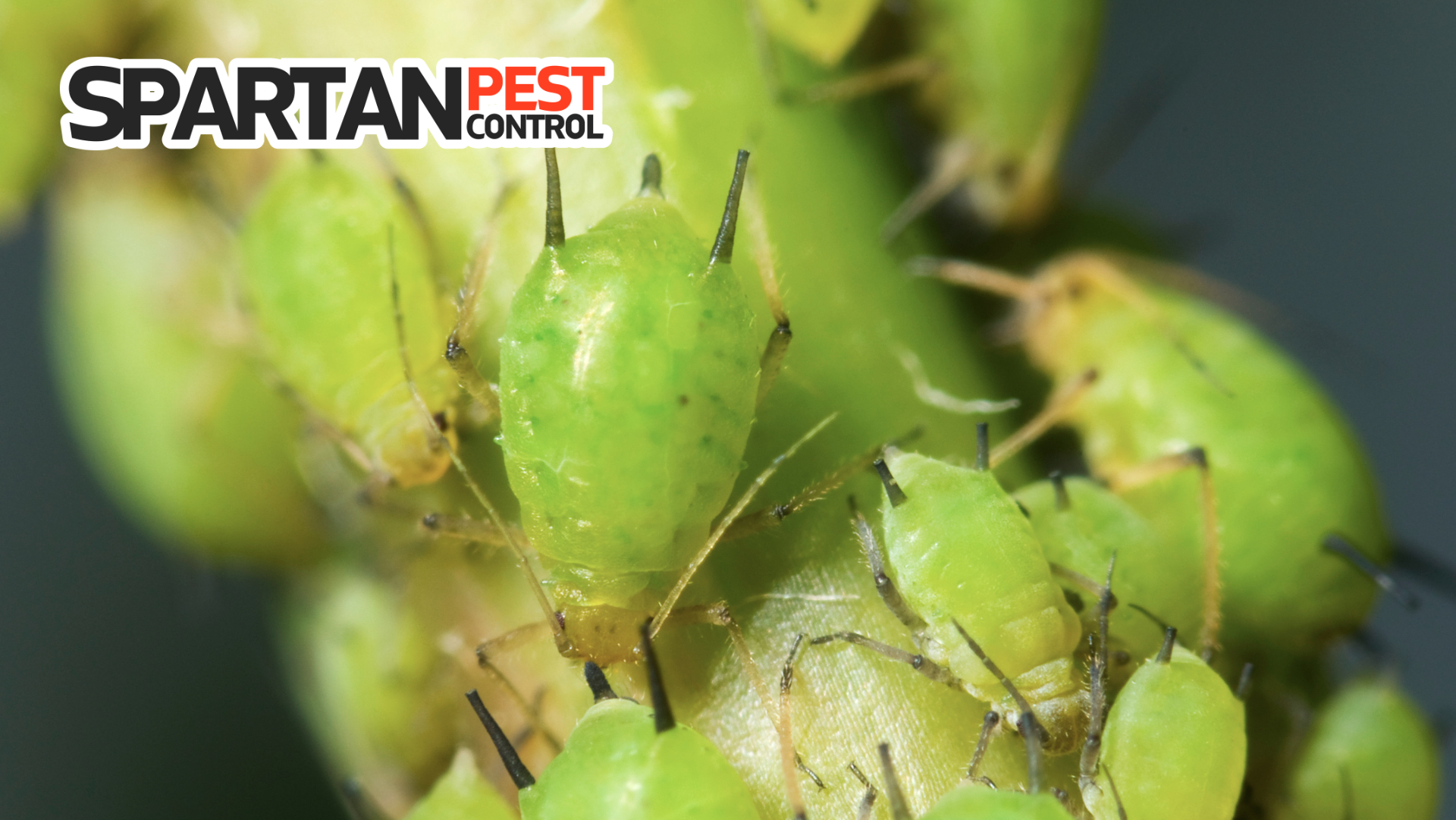My name is John Target, owner and operator of Target Pest Control. We are located in Calgary, Alberta and I have over 18 years of experience in the industry.
Get In Touch!
Phone Number:
Email Us:
Phone Number:
Send An Email:

What Are Carpenter Ants?
Carpenter ants are a commensal pest; commensal insects live near humans and eat some of the same food. Ants live in groups called colonies and work together to survive. There are two types of Carpenter ants in Canada, the Black Carpenter Ant, and the Red Carpenter Ant. Carpenter ants get their name because they chew and damage wood; they do not consume the wood. They burrow into it to make their nests. Most commonly these ants are located in or around residential homes, but can also be found within commercial structures. In nature, they aid in forest decomposition, but their behavior can damage a home’s structure.
There are three types of ants within a colony: Queens, males, and workers. Queens are fertile females. Their role is to lay as many eggs as possible. Most colonies have a mature, fertile queen; some also have immature queens. Males are winged and have one simple job: to mate with the queen. They only live a few days. The workers are all female. They maintain the nest, gather food, defend the colony, and feed the young. One colony can have up to 10,000 ants.
What Do Carpenter Ants Look Like?
All Ants have three sections: head, thorax, and abdomen. The ant’s head contains its mouth, large mandibles for chewing, and its eyes. The thorax is between the head and abdomen. It contains six legs. The abdomen is at the end of their body and contains their internal organs. Between their thorax and abdomen is a single triangle shaped bump called a node. This single node helps distinguish Carpenter ants from other types of ants.
Carpenter ants are the largest ants in North America. They are five times the size of other ants. They have long antennae and a large round abdomen at the end of their bodies. The workers have large mandibles capable of chewing wood. The queens and winged males have pale yellow wings attached to their thorax. After mating, the female loses her wings.
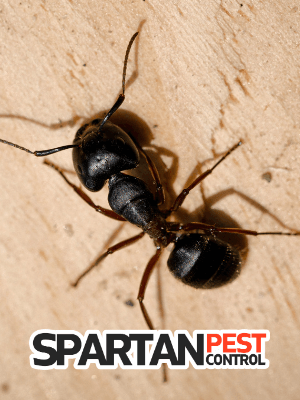
Black Carpenter Ants
Black Carpenter ants are all black with black or rusty red legs. Red Carpenter ants have a black head, red thorax, and black abdomen. The Worker ants are the smallest type of Carpenter ant, ranging from 6 mm to 13 mm. They have no stinger but have large mandibles. The winged male is smaller than the females and has a long, thin abdomen. Its head and mandibles are also very small. The Queen is the largest type of ant at around 19 mm.
Being able to tell the different between Carpenter Ants and normal ants is key in reducing possible damage do your home or property.
Thanks Spartan Pest Control for treating my mothers house for Carpenter Ants. Based on the damage the ants caused we are very happy they are gone.
Janet Greene – Customer Review (Calgary, AB)
What are the Signs of a Infestation?
Carpenter ants may not leave many signs, especially if they do not have a primary nest indoors. However, they can create small piles of wood shavings near their nests. These shavings are commonly found near baseboards, windowsills, in attics, or under dishwashers. Damage done by Carpenter ants is similar to termite damage. But carpenter ants do not consume the wood; they hollow out soft wood for nests. This hollowing process creates thin curving lines in wood. Unfortunately, this is often hidden behind walls or underneath furniture.
Rustling or scratching noises may also be heard, especially at night as the ants carve pathways in wood. Shed wings or ant exoskeletons can be found when infestations are more severe. The most obvious sign of an infestation is seeing ants. Winged ants are a sign that ants are searching for a new nest; workers are a sign that a nest is already established.
- Frass (wood shavings)
- Scratching sounds in wall or ceiling
- Shed wings & exoskeletons
- Damage to wood structure
- Seeing a Carpenter Ant
If you see a Carpenter ant, follow it around for a few minutes as it may lead you to a nest nearby. When a nest is located, get a treatment done as soon as possible as the damage these pests can cause can costs thousands of dollars.
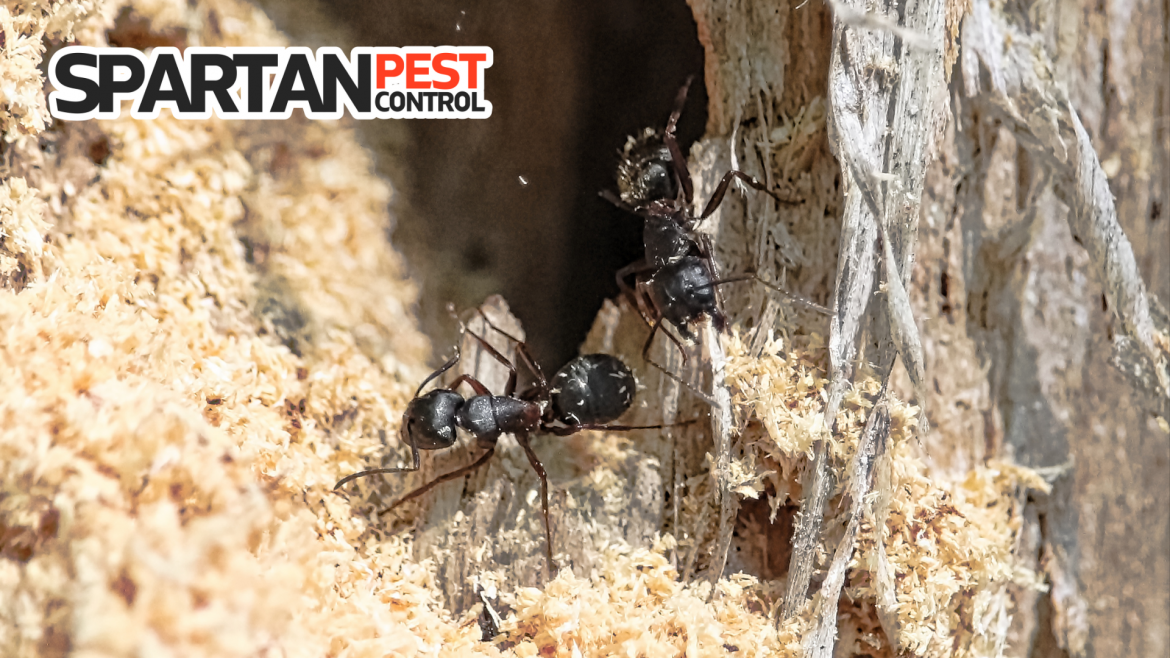
Do Carpenter Ants Cause Problems?
The primary cause of a Carpenter ant infestation is poor sanitation. Food spills, crumbs, and unsecured food will draw ants into your home. Once they enter a home, they will leave a scent trail and possibly create a nest. Ants use pheromones to mark routes to food and nests and will routinely follow the same paths to a stable food source. Even if they do not build a nest indoors, they will likely continue entering to eat. Cleaning up spills and frequent sweeping will help prevent ant infestations.
A secondary cause of infestations is poorly sealed windows and doors. Cracks in the foundation, around windows, or in attics will allow ants easy access to your home. Softened wood will also attract them. Fixing any leaks around appliances, eavestroughs, and porches will help deter ants.
Ants can also carry bacteria. They pick up bacteria as they travel across the floors and will leave it behind on any surface they walk on. They often carry E. Coli and Salmonella onto tables and counters. A thorough cleaning with a bleach-based product can eliminate these bacteria.
Carpenter ant bites are not poisonous, but they can be painful. They have large jaws, and they spray formulaic acid. The acid makes the bites itchy and red. The bite marks are the size of a pea and may burn. Although painful, the bite has no venom and does not transmit any disease. Clean the bite with warm water and soap. Antibiotic ointment can be applied as needed. It’s recommended to contact a local physician if the bitten area continued to cause pain after 24 hours.
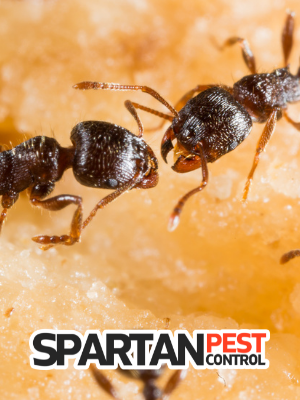
Carpenter Ant Damage
The main problem caused by Carpenter ants is structural damage. Carpenter ants are constantly chewing into the wood to create nests or new pathways. This can cause huge structural problems over time. It harms the strength and integrity of the wood. If they nest in structural beams, this can be dangerous. While they work slower than termites, their damage can weaken structural beams enough to cause a collapse. The beams can also warp, causing crooked doorframes or slanted floors. Outside, they can damage or weaken fence posts and balcony posts. A weakened balcony post poses the most dangerous and should be fixed immediately.
Carpenter Ant Treatments
There are two main options for treatment: DIY home treatments or hiring a trained exterminator. Professionals have access to a wider range of products and know how to safely apply them. If you are concerned about the extent of the infestation, have kids, pets, or allergies, a professional is the safe choice and often the right one due to the complex nature of Carpenter Ants. If using over the counter products or home remedies, you can end up pushing the colony to a near by location instead of eliminating them.
Treatment usually involves a combination of insecticides. Bait granules should be placed near food sources where ants have been seen. The goal is for the workers to carry the bait to the queen. If the inside nest is a satellite nest, outdoor baiting or spraying may be necessary. A homemade solution of boric acid and honey or sugar is a classic home remedy however due to the size of Carpenter ants almost never effective. Also, boric acid is poisonous to pets and children and should be used with caution.
A professional inspection is recommended for Carpenter ants. A Trained pest control professional can correctly identify the ant species and treat it accordingly. Treatment may involve a combination of spraying, baiting, and sources all nest locations. An insecticide may be sprayed around the outside of windows, doors, and eaves to kill any ants. Bait stations may also be placed inside and outside. A foam or dust can be used in attics to kill ants inside voids or crack and crevasses. It is important to have attics and any indoor spaces inspected for structural damage.
Further preventative measures include fixing leaks that cause moisture rich environments and sealing windows and doors. Trees that hang over the roof should also be trimmed back. The best way to treat a nest is to locate it and apply commercial grade pesticides directly inside. For more information on controlling Carpenter ants, check out our ant control services page for details.
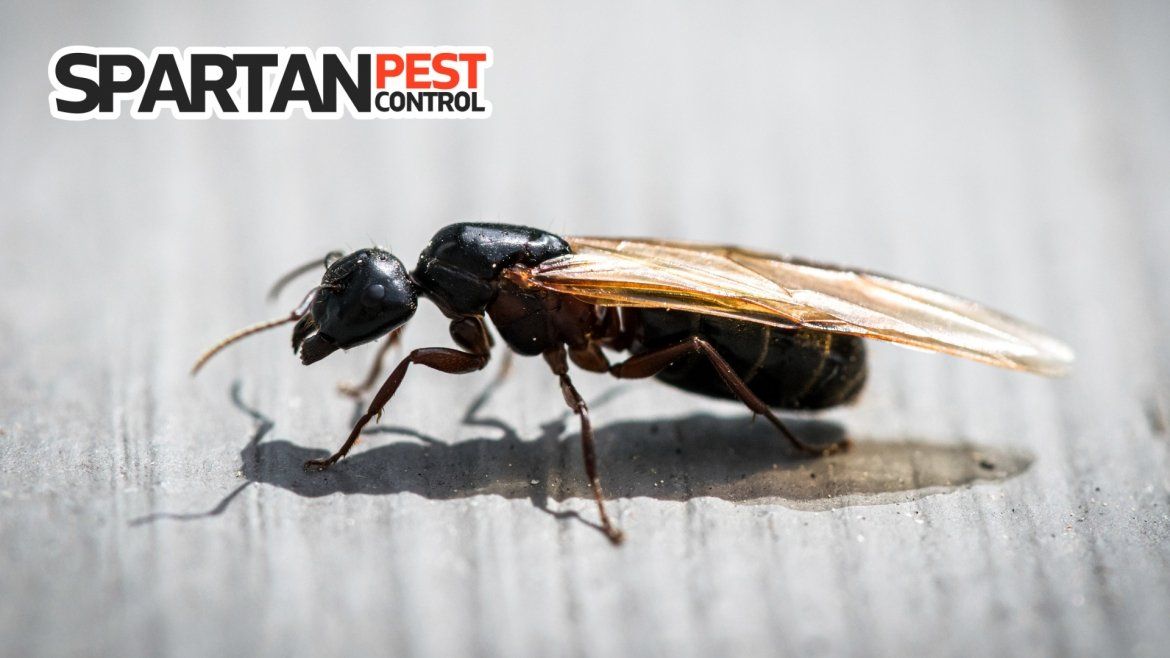
10 Facts About Carpenter Ants
1) Carpenter ants don't have lungs
They breathe through holes on the sides of their bodies called spiracles. These holes connect to tubes throughout their bodies. Carbon dioxide is released through these same tubes.
2) Carpenter ants are tidy
Carpenter ants routinely clean their nests and tunnels. They carry dead ants out of their nests and even use man-made resins to scrub the tunnels.
3) Carpenter ants have amazing strength
They can lift up to 50x their body weight. Most of this weight can be carried by their mandibles.
4) Carpenter ants can spray formic acid
Although they lack venom, Carpenter ants can spray formic acid into bites. Formic acid burns and makes the bites painful.
5) Carpenter ants have poor vision
They rarely use their eyes. Instead, they rely on pheromone trails to find their nests and food. They even have pheromones alert other ants to danger.
6) Carpenter ants are massive
They are the largest ant in North America. The queen is around 20 mm while the workers are between 6.5 and 13 mm. Other species are often only 1 to 2 mm.
7) Carpenter ants are communal
They live in colonies with thousands of workers and their roles are determined by what type of ant they are: worker, queen, or male. All ants work together for the good of the colony.
8) Carpenter ants are dormant in winter
Unless living in a warm environment like a house, they hibernate in winter. They burrow into the ground in cold climates like Alberta. They enter a true hibernation where they don’t eat for months.
9) Carpenter ants don't eat wood
Instead, they dig tunnels and nests in the wood. Excess wood is discarded outside of the tunnels.
10) Most Carpenter ants are female
Almost all Carpenter ants are female except for the winged males. Their job is to fertilize the queen. After fertilization, they die off.
About Author
John Target - Owner & Operator
My name is John, owner of Target Pest Control. We are now located in Calgary, Alberta and have been providing pest control solutions on the east coast since 2008. I have over 18 years experience in the industry and enjoy the everyday problem solving this industry offers.
You May Also Like
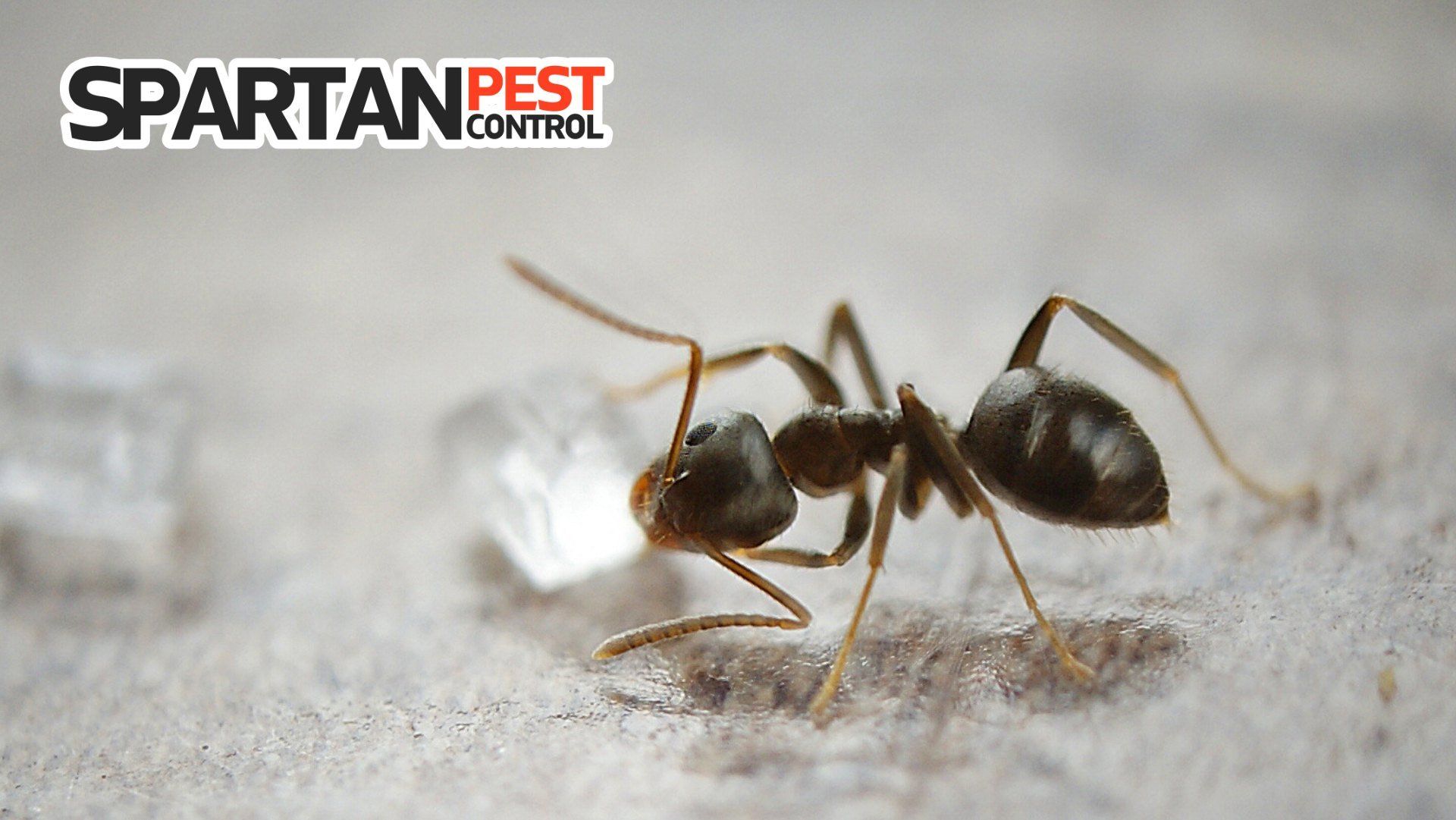
AUTHOR

RECENT POSTS

© Copyright 2024 | All Rights Reserved | Web Design & SEO by Purple Penguin Media
